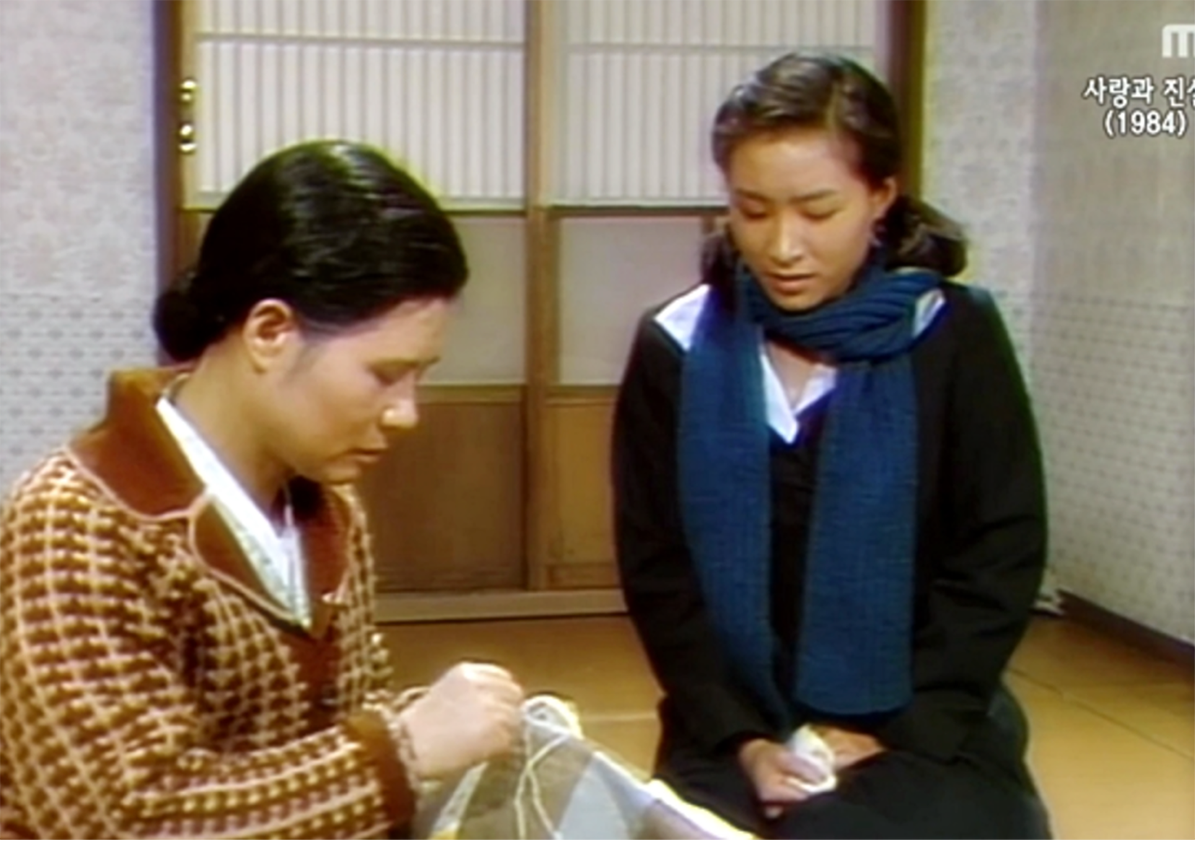
by Jeongon Choi, PhD Candidate, Department of East Asian Languages & Literatures
The market success of South Korean television dramas in Asian countries during the 2000s was termed Hallyu 1.0, and their narrative trend centered on Cinderella stories. So-called candy girl characters who charm aristocratic men with their cheerful and hard-working attitude still define K-drama now, and even though these Cinderella romances usually end up in the acceptance of patriarchal ideology, the candy girl story is not merely a fantasy about longing for upward marriage. In the history of Korean culture, this kind of character has provided an important transition in media conventions of depicting women in workplaces, from the dichotomy between poor workers and the arrogant middle class to intelligent, attractive working women who cross class boundaries and challenge non-traditional occupations.
By the 1970s, the dominant stereotype of working women in Korean culture was as low-waged sweat laborers, not only factory girls but also bus attendants, housemaids, and prostitutes, which were common occupations for working-class girls from the countryside. The traditional stereotype of an innocent girl imperiled in the modern city has been repeated in the Korean media since the early modern period, emphasizing the working-class woman’s vulnerability to risks, such as unemployment, pregnancy, and injury, and her powerlessness to overcome this suffering. In the 1980s, however, as more and more women received higher education and entered the workforce, this image began to change. In particular, television was a forerunner in building positive images of working women as commercial broadcast companies targeted female audiences with purchasing power.
In 1984, star writer Su-hyeon Kim presented an innovative working woman character through her megahit TV drama Love and Truth. This show achieved a viewing rate of 70 percent, and its stunning popularity was mainly driven by the female enthusiasm for Hyo-seon (played by Ae-ri Jeong). As a protagonist, Hyo-seon moves up in social class by becoming a professor and marrying a wealthy architect. In her journey across different classes, her working-class qualities appeal to members of the upper class. In her private life, she is frugal, good at house chores, willing to undertake manual labor, and respectful to the elderly. In public, she is hard-working, diligent, energetic, and daring. In this drama, the public-private split for working women, including Hyo-seon, faded away, and they are not subordinated to their private relationships such as filial duty or motherhood.
In addition to these working-class virtues, one of Hyo-seon’s popularity factors is her outspoken criticism of the upper class. She often condemns the idle rich, thus showing confidence in the moral superiority of the working class. This moral value helps Hyo-seon lead in her relationships with upper-class individuals, even romantically. In the second episode of Love and Truth, Hyo-seon meets her male counterpart Hyeong-seop for the first time, an attractive and wealthy architect. At a busy café in Seoul, Hyo-seon is waiting for a benefactor who is coming to provide her with a scholarship. A waitress gives Hyo-seon a scornful look, her shabby clothes and big bags indicating that she has just arrived in Seoul from the country. Hyeong-seo is an anonymous sponsor and, on discovering Hyo-seon, does not hide his disappointment because he expected a promising male student. “Girls only want a degree for a better marriage,” he says. Hyo-seon immediately condemns his prejudice, saying that, “Only leisurely girls need a college degree for marriage, if I could afford such an extravagance, I would not need to receive a stranger’s support, so do your job if you are here to give me a scholarship.” Hyo-seon’s daring reply fascinates Hyeong-seop, and he begins unanswered courting until Hyo-seon completes her PhD degree.
Assertive and intelligent images of laborers were widely circulated in Korean culture, as influenced by the labor movement since the 1970s, emphasizing the solidarity between laborers and intellectuals. Love and Truth appropriates the aesthetics of the Korean labor movement to visualize Hyo-seon: She is a college student, but she is not seen in a campus or a library. In narrow and dirty urban places such as a small publishing office, a printing factory, a bus, a boarding room where she lives off her friend, Hyo-seon buries her nose in books, fighting against her tiredness. Through the poetic depiction of her face and the humble surroundings, the daily lives of working-class women are depicted with a silver lining of beauty.
Hyo-seon’s character in Love and Truth demonstrates how feminism in 1980s Korean popular media centered on working-class women, thereby shifting the stereotype of this group from vulnerable victims toward active fighters. While more questions remain to be answered, the show throws doubt on claims that feminist programs were absent from Korean TV before the 2000s.
—Jeongon Choi, East Asian Languages & Literatures, received a 2022 CSWS Graduate Student Research Grant for this project.

